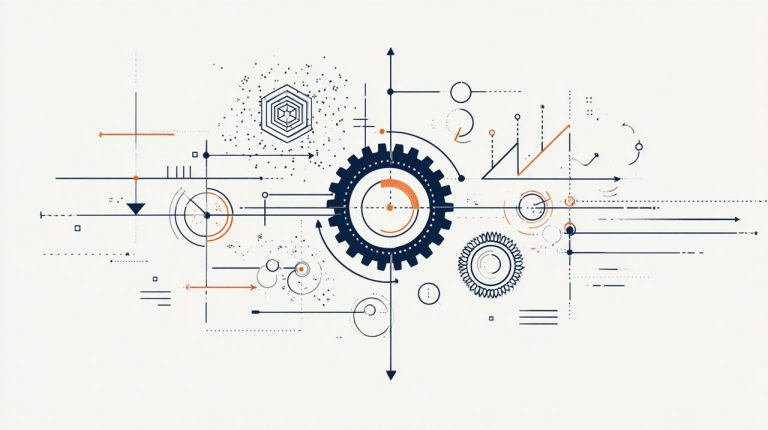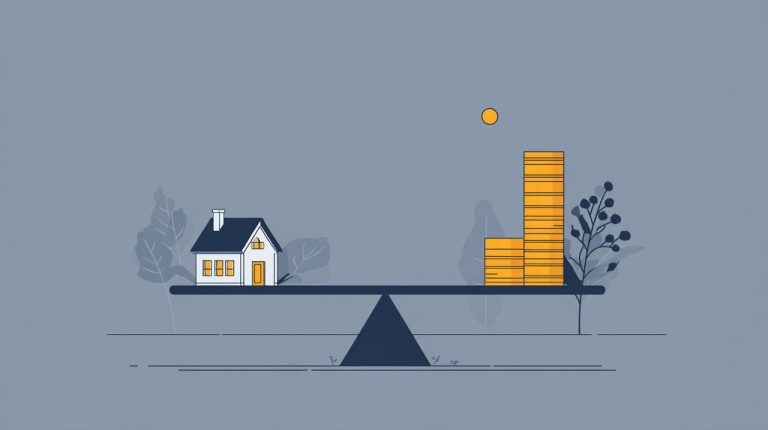I remember walking through a home once, a beautiful place, but the owner was distraught. Just five years after a ‘bargain’ roof replacement, they were already seeing leaks. That initial ‘saving’ of a few thousand dollars had turned into structural damage, ruined ceilings, and a massive headache. It’s a painful reminder that a roof isn’t just about covering your head; it’s arguably the most critical investment you’ll make in your home’s long-term health.
What many homeowners overlook is the profound difference in long-term value between common roofing materials. While an asphalt shingle roof typically demands replacement every 15-30 years, a metal roof can reliably last 50-70 years, sometimes even longer. This stark contrast in lifespan alone doesn’t just reshape the investment discussion; it dictates the very future of your home’s protection.

Roofing Materials: Basic Analysis
So, with that stark reality in mind, let’s strip away the marketing jargon and get to the fundamentals. Every smart home decision starts with understanding the foundational components. Before we weigh performance, it’s crucial to grasp what each roofing system actually is. We’re talking about two vastly different construction philosophies here.
Metal Roofing: Key Characteristics
Metal roofing systems come in various forms, primarily sheets or panels made from steel, aluminum, copper, or zinc. These materials are engineered for durability and longevity, often far exceeding traditional options. Common profiles include standing seam, metal shingle, and corrugated panels, each offering distinct aesthetic and structural properties.
- Composition: Steel (galvanized, Galvalume), aluminum, copper, zinc.
- Profiles: Standing seam, corrugated, metal shingle, tile, shake.
- Installation: Often involves interlocking panels or sheets, creating a robust, weather-tight seal built to last.
Asphalt Shingles: Core Advantages & Limitations
Asphalt shingles, the most common roofing material in North America, are composite products. They consist of a fiberglass or organic mat base saturated with asphalt and topped with ceramic granules. Their widespread adoption stems from their lower initial cost and relative ease of installation.
However, these immediate benefits come with inherent limitations that often become clear only years down the line.
- Composition: Fiberglass mat, asphalt, ceramic granules.
- Types: 3-tab, architectural (laminate), designer.
- Limitations: Highly susceptible to granule loss, cracking, and curling over time, particularly under harsh weather conditions.
Performance Dimensions: Durability & Long-Term Behavior
Now that we understand the basic anatomy, it’s time to talk about the real battlefield: performance. Because a roof isn’t just about what it’s made of; it’s about how it stands up to everything Mother Nature throws at it, year after year, decade after decade. This is where the rubber truly meets the road.
My ‘battle report’ focuses on how these materials actually perform when faced with the relentless forces of nature.
Longevity & Environmental Adaptability
In the real world, a roof’s true value emerges from its ability to withstand constant environmental assault. Metal roofs consistently outperform asphalt in this critical metric, offering superior resistance to impacts, extreme temperatures, and moisture.
- Metal Roofing:
- Lifespan: 50-70+ years. Many manufacturers confidently offer 30-50 year warranties, a testament to their enduring quality.
- Weather Resistance: Excellent against high winds (rated up to 140 mph+), hail, snow, and ice. Crucially, they are non-combustible (Class A fire rating), adding a significant layer of safety.
- Thermal Cycling: Engineered to expand and contract without damage due to specialized fastening systems, preventing cracking or warping.
- Asphalt Shingles:
- Lifespan: 15-30 years (3-tab: 15-20, architectural: 25-30). This often means you’ll replace your roof two or three times over the lifespan of a single metal roof.
- Weather Resistance: Vulnerable to wind uplift (granule loss at 60-90 mph), hail damage (bruising, cracking), and thermal shock, which can lead to premature failure.
- Degradation: UV exposure relentlessly degrades the asphalt, leading to granule erosion and brittleness, weakening the shingle over time.
“A roof that needs replacing every 20 years isn’t a one-time investment; it’s a recurring expense that will drain your budget for decades. That’s the core difference in long-term planning that I always emphasize.”
Maintenance Needs & Common Issues
Maintenance directly impacts the true cost of ownership. While no roof is entirely maintenance-free, the demands differ significantly between these two materials. Understanding this can save you time, effort, and unexpected repair bills.
- Metal Roofing:
- Maintenance: Generally low. Regular cleaning of debris is usually sufficient to keep it performing optimally. Fasteners may need periodic inspection on some systems, but this is minor.
- Common Issues: Potential for denting from extreme impacts (like very large hail), or minor scratching if walked on improperly. These are typically aesthetic and rare.
- Asphalt Shingles:
- Maintenance: Higher. Requires routine inspections for curled, cracked, or missing shingles. Moss and algae growth are common issues that need regular treatment to prevent damage.
- Common Issues: Granule loss leading to exposed asphalt, cracking from thermal cycling, wind damage causing blow-offs, and susceptibility to mold and mildew are all frequent occurrences that demand attention.
Return on Investment: Cost & Value Considerations
Understanding performance is one thing, but let’s be honest: your wallet is talking. The upfront price tag rarely tells the full story, and focusing solely on it can lead to costly regrets down the line. A true cost analysis integrates installation, long-term savings, and property value.
This is a critical factor when evaluating whether Metal Roofing or Asphalt Shingles is the smarter choice for your budget, not just today, but for the next half-century.
Initial Investment Comparison
This is typically where asphalt shingles appear to win, luring homeowners with the promise of immediate savings. But as I always tell my clients, it’s a short-sighted view that ignores the long-term financial landscape, a principle that applies broadly to all significant household investments and avoiding future financial burdens 10 Tips to Get Out of Debt: Your Practical Guide to Financial Freedom.
- Asphalt Shingles:
- Cost: $3.00 – $5.00 per square foot installed.
- Benefit: Lowest upfront cost, making it accessible for immediate budget constraints. This is often the primary, and sometimes only, factor considered.
- Metal Roofing:
- Cost: $8.00 – $15.00+ per square foot installed, depending on material and profile.
- Benefit: Higher initial outlay, but this is offset by a significantly longer lifespan and other savings that compound over time. Think of it as investing in an asset rather than buying a consumable.
Long-Term Benefits & Hidden Costs
The real value proposition of metal roofing becomes crystal clear over decades. It’s not just about avoiding re-roofing costs; it’s about a cascade of benefits that impact your daily life and your home’s overall financial health.
- Metal Roofing:
- Roof Lifespan: 2-3 times longer than asphalt, virtually eliminating future replacement costs. This is like paying for a service once and getting it for a lifetime.
- Energy Efficiency: Reflective coatings can reduce attic heat gain by 10-25%, leading to noticeably lower cooling costs in warmer months. Some even qualify for energy tax credits, putting money back in your pocket.
- Insurance: May qualify for discounts in some regions due to superior fire and wind resistance, a tangible recognition of its durability.
- Home Value: Boosts
home valueand curb appeal, often serving as a strong selling point if you decide to sell.
- Asphalt Shingles:
- Hidden Costs: Frequent replacements (and associated labor/disposal fees), higher cooling bills due to heat absorption, and potential for mold remediation are all factors that quietly erode your savings.
- Disposal: Contributes significantly to landfill waste, a growing environmental concern that often goes unacknowledged in the initial cost.
“Don’t just look at the price tag; calculate the cost per year of service. That’s the real metric for a smart investment, and it’s the only way to truly compare apples to apples when considering a roof.”
Beyond Function: Aesthetics & Sustainability
Of course, a roof is more than just a financial spreadsheet or a shield against storms. It’s a major visual component of any home, shaping its character and appeal. Beyond its functional role, its appearance and environmental impact are increasingly important factors for today’s homeowners.
Visual Impact & Style Matching
Both materials offer a range of aesthetic choices, though metal roofing has evolved significantly beyond its industrial past. It’s no longer just for barns or commercial buildings.
- Asphalt Shingles:
- Aesthetics: Provides a traditional, familiar look, with a wide variety of colors and architectural styles mimicking wood shakes or slate.
- Metal Roofing:
- Aesthetics: Offers modern, sleek lines (standing seam), or can be designed to mimic traditional materials like slate, tile, or wood shake with remarkable realism. It provides a diverse palette and can significantly enhance architectural style, available in many colors and finishes.
Environmental Footprint & Energy Efficiency
Sustainability is no longer an afterthought; it’s a critical consideration for many homeowners. Our choices today impact the environment for decades to come, and your roof is a significant part of that equation.
- Metal Roofing:
- Sustainability: Often made from 25-95% recycled content and is 100% recyclable at the end of its long life. This drastically reduces landfill waste compared to other options.
- Energy Efficiency: “Cool roof” coatings reflect solar radiation, significantly reducing the urban heat island effect and lowering energy consumption for cooling your home.
- Asphalt Shingles:
- Sustainability: Primarily petroleum-based. Not easily recyclable, contributing massive amounts of waste to landfills.
- Energy Efficiency: Generally absorbs more heat, increasing cooling loads and putting more strain on your HVAC system. While “cool” asphalt shingles exist, they are less common and less effective than metal.
The Smart Choice: Max Pan’s Final Recommendations
We’ve covered the what, the how, and the why. Now, let’s get down to brass tacks: what does this all mean for your home, your budget, and your peace of mind? The question isn’t simply Metal Roofing vs. Asphalt Shingles: Which Is the Smarter Choice? It’s about which is the smarter choice for you, specifically.
My analysis, based on years of real-world performance data and long-term financials, provides a clear path forward for most homeowners.
Applicable Scenarios Analysis
Different needs dictate different outcomes. There’s no one-size-fits-all answer, but here’s how I break it down for my clients:
- Choose Metal Roofing if:
- Your budget allows for a higher initial investment for superior long-term value.
- You prioritize durability, minimal maintenance, and extreme weather resistance.
Roof lifespanandenergy efficiencyare top concerns for your household.- You seek to significantly increase
home valueand curb appeal. - Environmental impact and sustainability are important to you.
- Choose Asphalt Shingles if:
- Your primary concern is the lowest possible upfront cost, and immediate affordability is paramount.
- You plan to sell the property within 10-15 years and prioritize short-term savings over long-term investment.
- You prefer a traditional aesthetic and are comfortable with more frequent maintenance and potential future replacement costs.
Decision Checklist
Before you sign on any dotted line, I always advise my clients to sit down with this checklist. It might seem basic, but answering these questions honestly can save you decades of regret and thousands of dollars. Take your time with these:
- Budget Horizon: Are you optimizing for upfront cost or total cost of ownership over 30+ years?
- Climate Zone: Do you face extreme weather (heavy snow, high winds, intense sun) that demands superior protection?
- Maintenance Tolerance: How much time and money are you willing to spend on roof upkeep annually?
- Energy Goals: Is reducing energy bills a priority for your home, especially in hot climates?
- Resale Value: How important is boosting your home’s long-term market appeal and value?
- Environmental Impact: Does material recyclability and energy footprint matter to you as a homeowner?
I’ve seen too many homeowners skip this vital step, only to find themselves stuck with a roofing solution that simply doesn’t fit their life or their long-term goals. Don’t be one of them.
Ultimately, making the smarter choice isn’t just about shingles or metal; it’s about protecting your biggest asset and securing your peace of mind for decades to come. For those seeking a long-term, high-performance solution that delivers significant energy efficiency and home value benefits, metal roofing stands as the clear winner in the Metal Roofing vs. Asphalt Shingles: Which Is the Smarter Choice? debate. It’s an investment that pays dividends for decades.
Understanding these distinctions is the first step toward a confident decision. For a deeper dive into specific metal roofing profiles or advanced asphalt shingle technologies, further research into local building codes and certified installers is crucial. This foundational knowledge empowers you to confidently engage with contractors and ensure your next roofing project is a strategic triumph, rather than a future headache.
It’s about ensuring you never have to face the kind of heartbreaking, costly surprises I’ve seen too many times. Invest wisely, and your roof will protect more than just your home – it will protect your future.
💡 Frequently Asked Questions
Metal roofs can reliably last 50-70 years or even longer, whereas asphalt shingle roofs typically require replacement every 15-30 years.
Asphalt shingles have a lower initial cost ($3.00 - $5.00 per sq ft), but metal roofing, despite a higher upfront cost ($8.00 - $15.00+ per sq ft), offers lower long-term costs due to its significantly longer lifespan, reduced maintenance, and energy efficiency benefits.
Metal roofs offer superior resistance to high winds, hail, snow, and ice, are non-combustible (Class A fire rating), and are engineered to expand and contract without damage. They also provide significant energy efficiency through reflective coatings.
Yes, metal roofing is generally more sustainable as it is often made from 25-95% recycled content and is 100% recyclable. It also reduces the urban heat island effect and lowers energy consumption, unlike petroleum-based asphalt shingles which contribute large amounts of waste to landfills.








